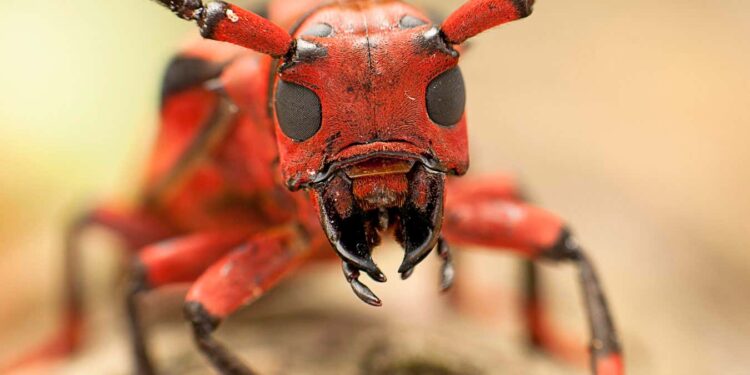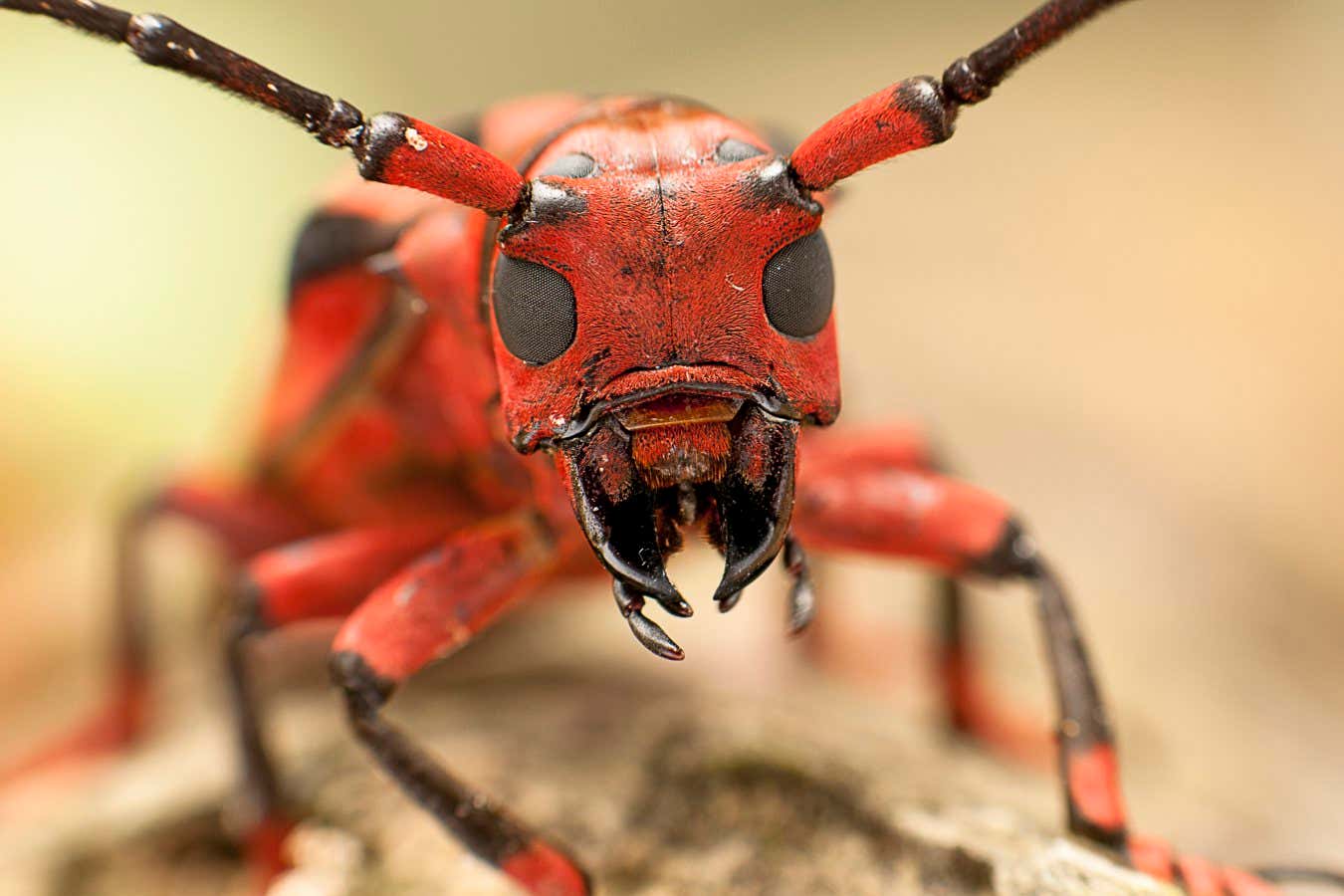
A tropical flat-faced longhorn beetle in Malaysia
Kim Hui Yu
“It had a strange look, like an alien, but it wasn’t angry. It sat still on the branch all the time,” said Kim Hui Yu, who photographed the flat-faced longhorn beetle in the image above on a family trip to Gunung Jerai on Malaysia’s west coast.
A lightbulb in a mosquito net attracted invertebrates overnight. In the morning, she chose the most colourful to photograph. “I want people to know that all creatures, even small ones, count. So don’t destroy the forest.”
The photo, entitled Alien, is one of eight in a biodiversity display at the Natural History Museum’s 2025 Wildlife Photographer of the Year exhibition, opening in London on 17 October. The images are past entries to the competition.
The display also includes a table-sized map of biodiversity levels, as measured by the Biodiversity Intactness Index created by the museum’s researchers.
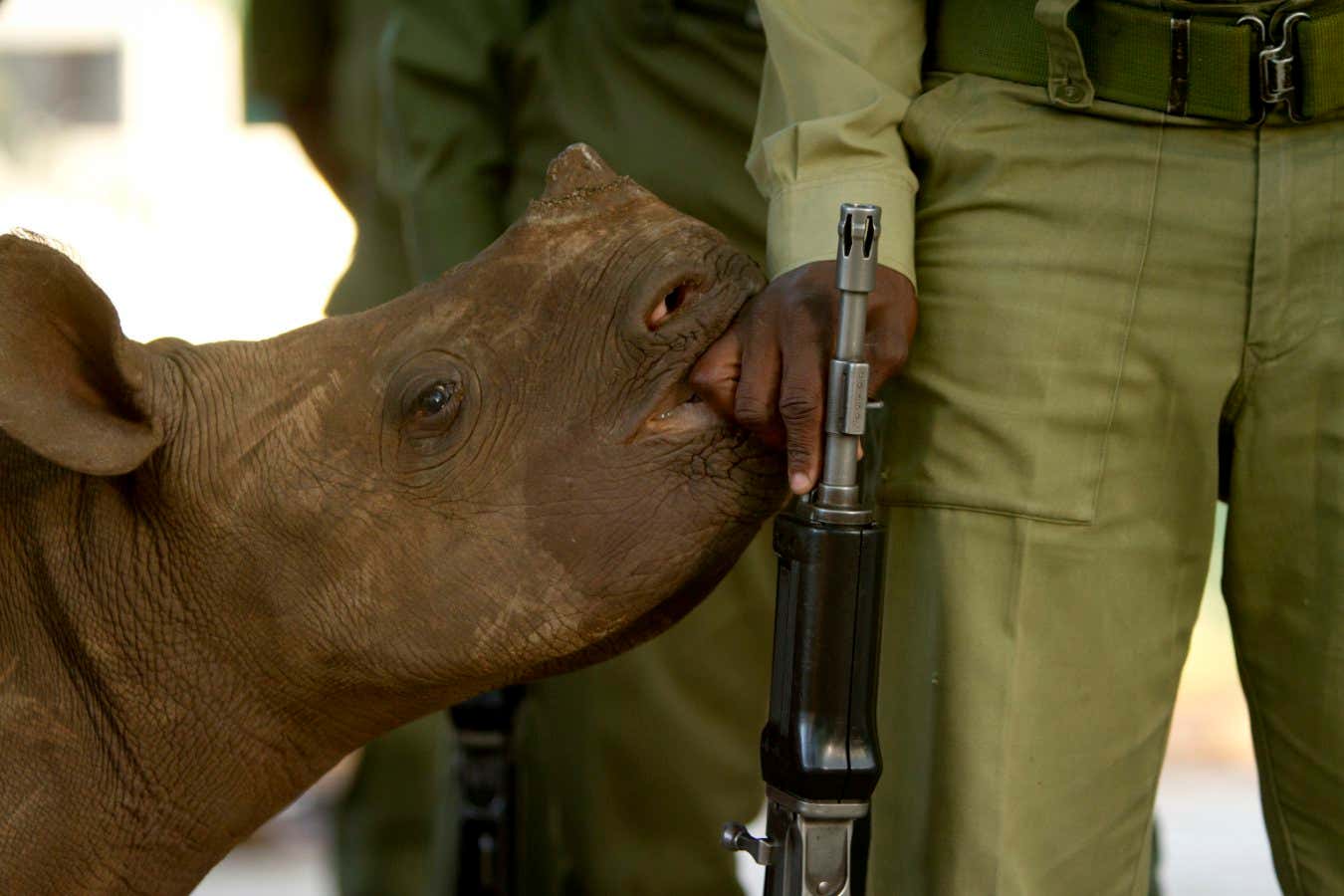
A four-month-old black rhino calf
Hilary O’Leary
Hannah McCartney, who runs the competition, says the images can have a powerful impact – the aim is to get visitors to care enough that they later take action. A prime example is Innocence Betrayed by Hilary O’Leary, featuring a 4-month-old black rhino calf nuzzling an anti-poaching scout. It had been found lost in the bush.
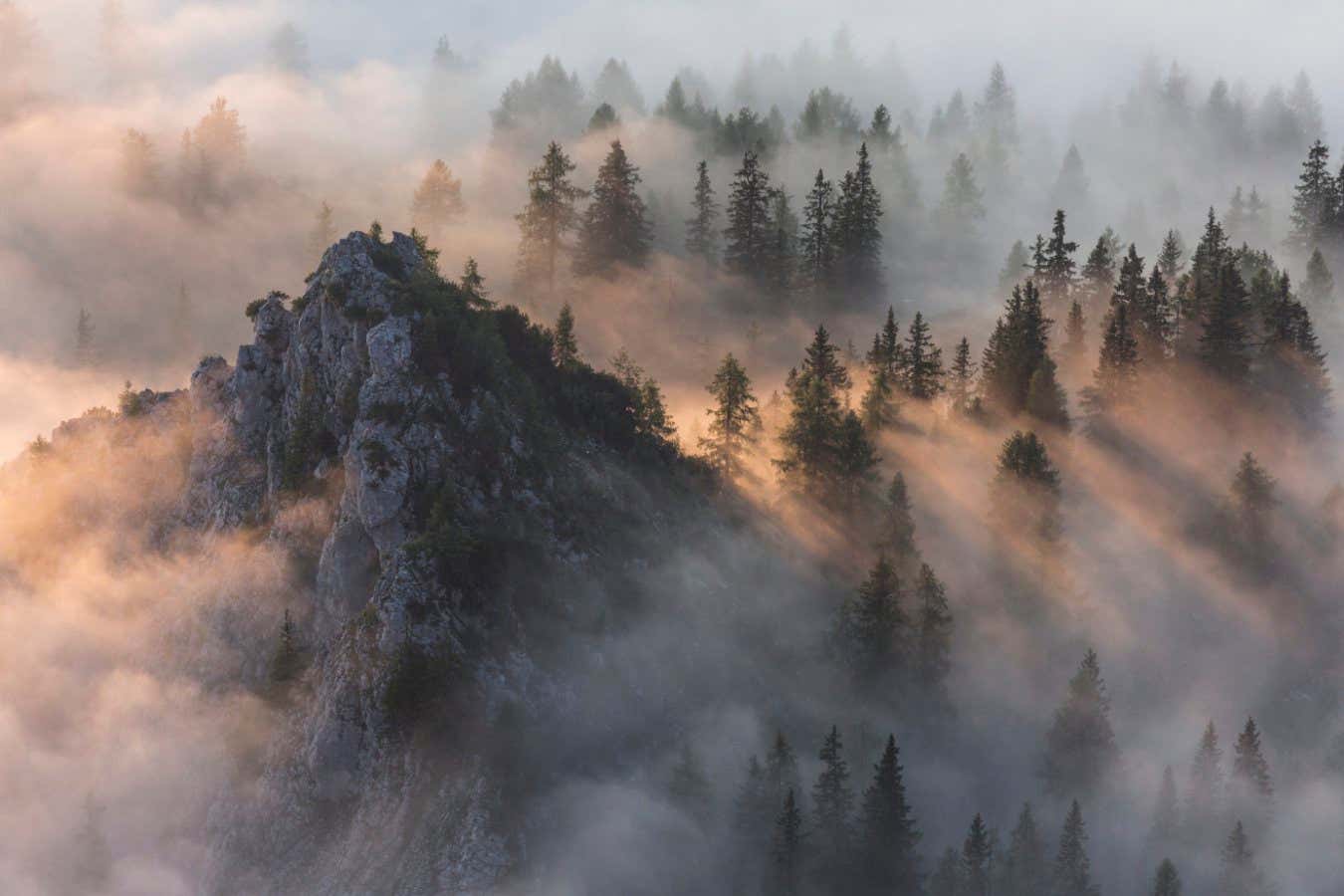
Berchtesgaden National Park in the German Alps
Marc Graf
High and Wild by Marc Graf takes a very different approach to what we might lose. This shot of trees and rocks emerging from sunlit clouds was taken in Berchtesgaden, a national park in the German Alps.
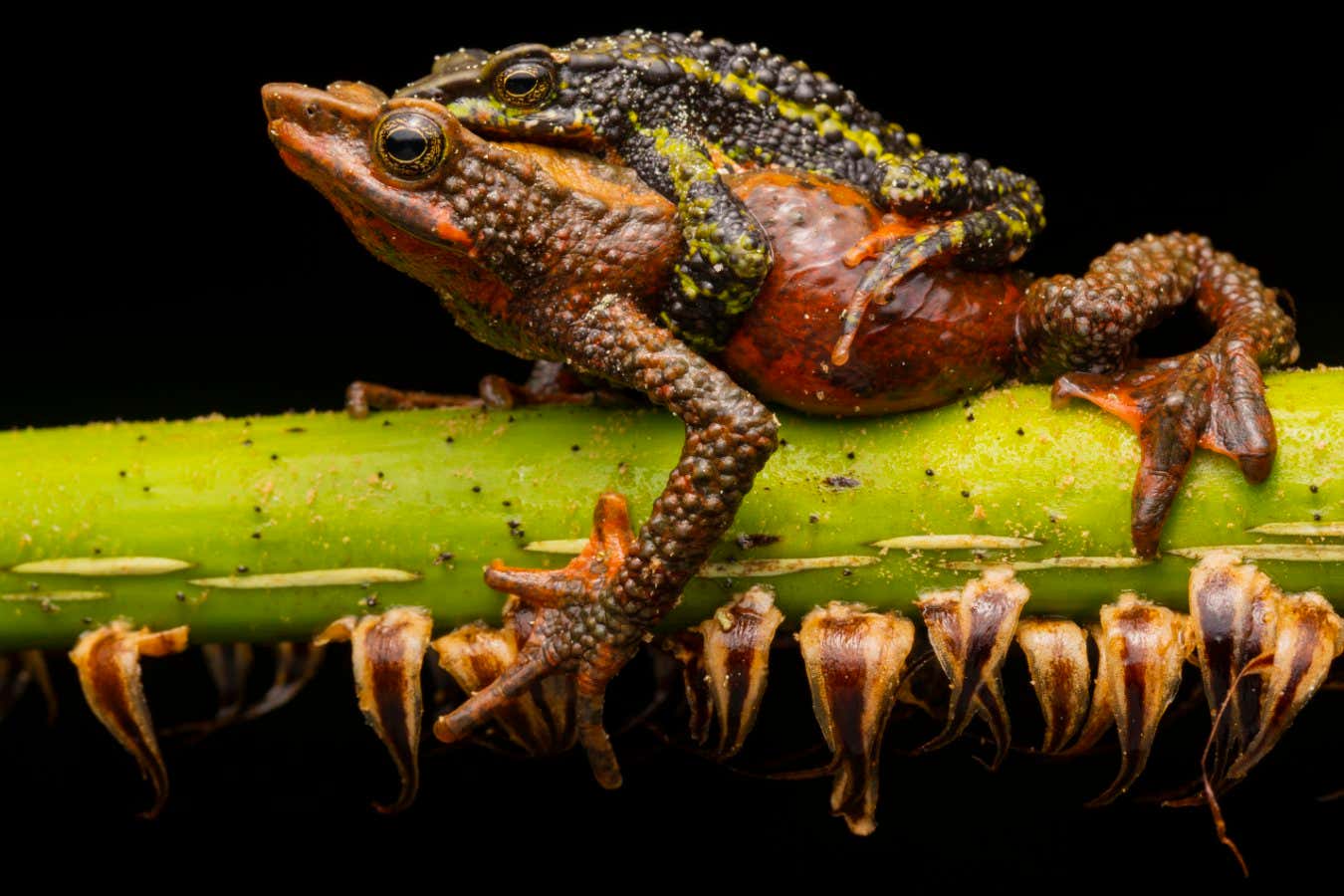
An intimate moment between harlequin toads
Jaime Culebras
Jaime Culebras’s The Happy Couple zooms in on mating harlequin toads in the Sierra Nevada de Santa Marta National Natural Park, Colombia. Most species of harlequin toads are endangered.
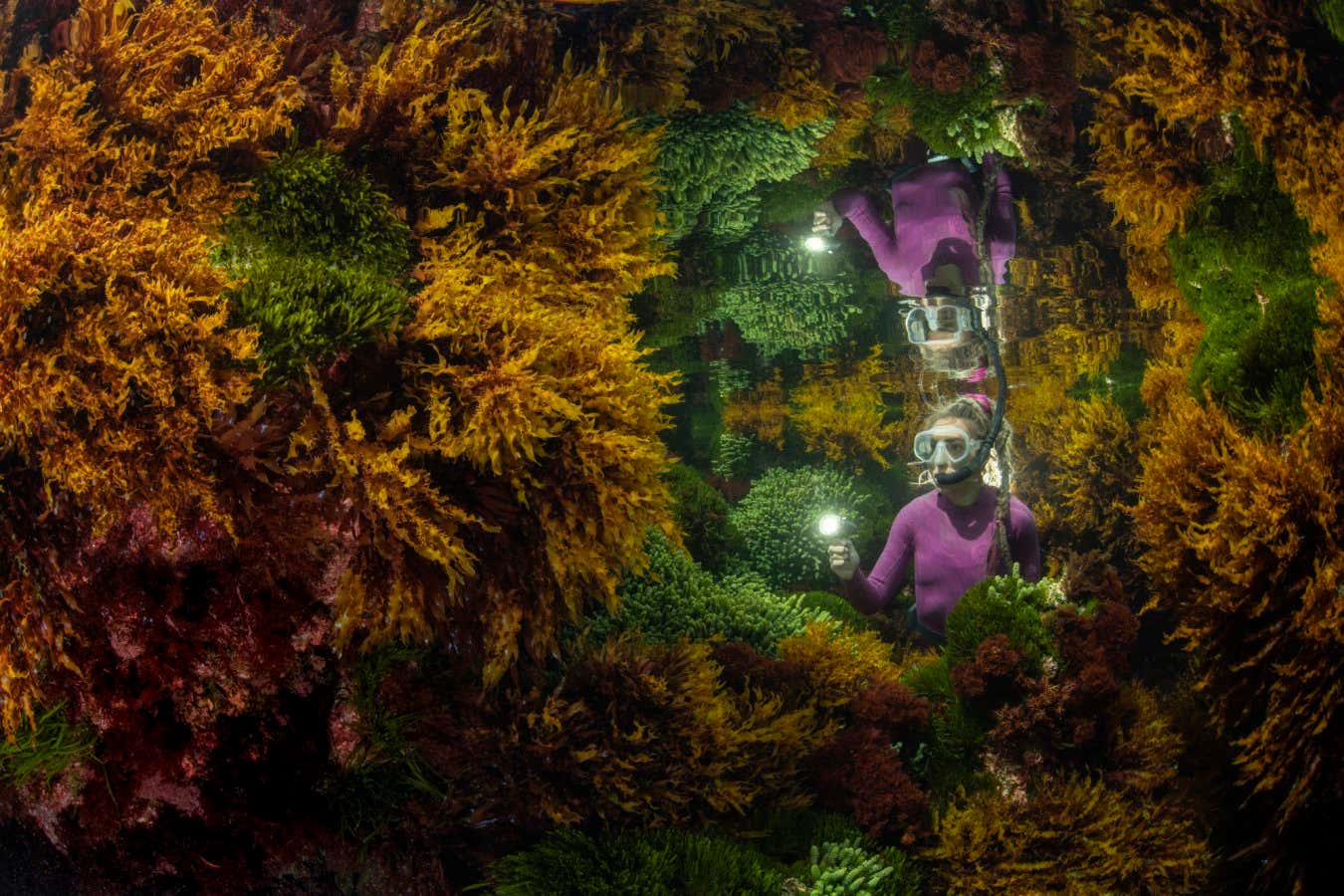
Marine ranger Caitlin Woods off the coast of Lord Howe Island
Justin Gilligan
Rich Reflections by Justin Gilligan was photographed off Lord Howe Island between Australia and New Zealand. The snorkeller among the extraordinary seaweeds is marine ranger Caitlin Woods.
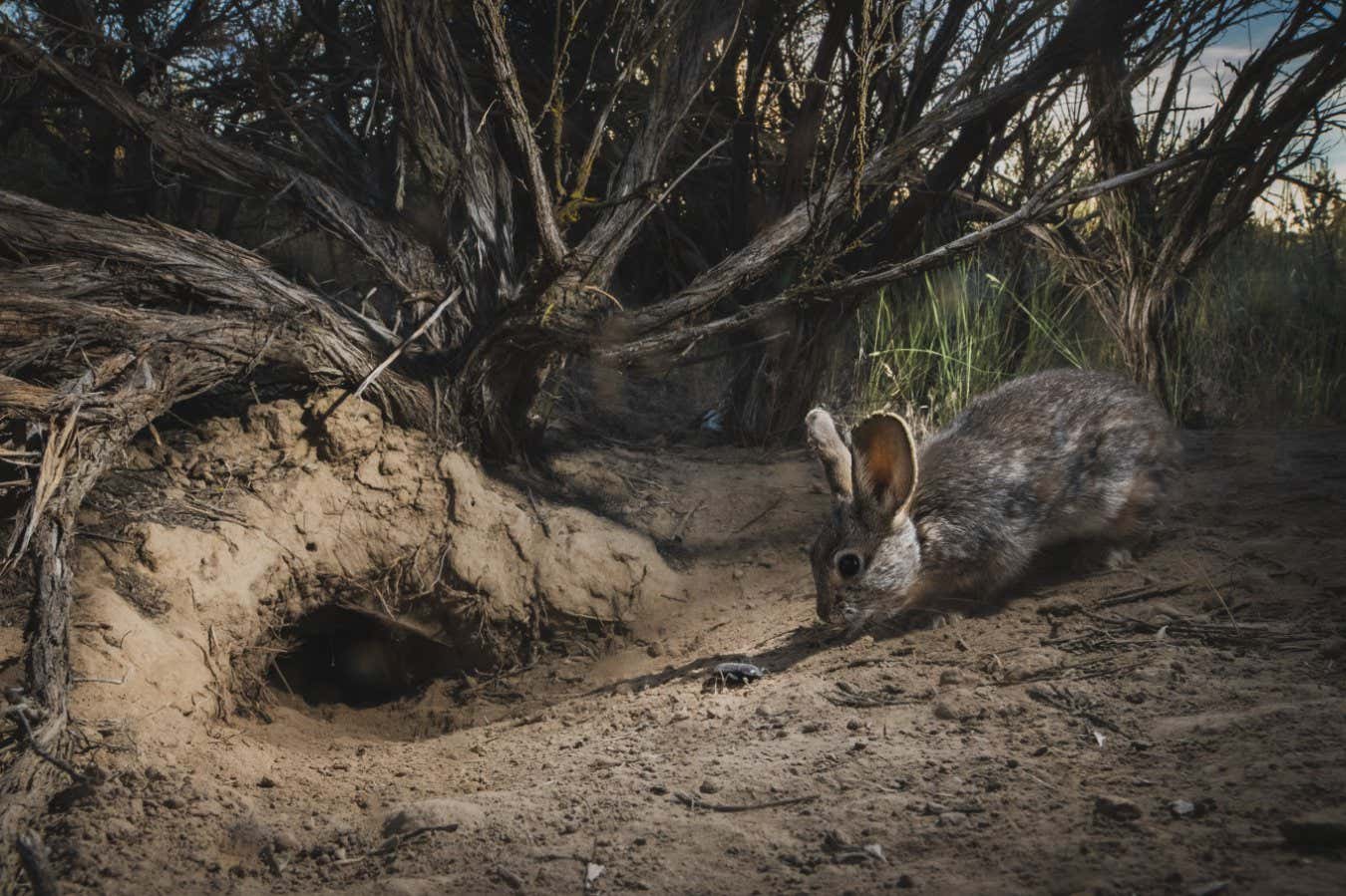
An interspecies showdown
Morgan Heim
A close encounter between a pygmy rabbit and a stink beetle – one of many species that take advantage of rabbit burrows – was captured in Burrow Mates by Morgan Heim in Columbia Basin, Washington State.
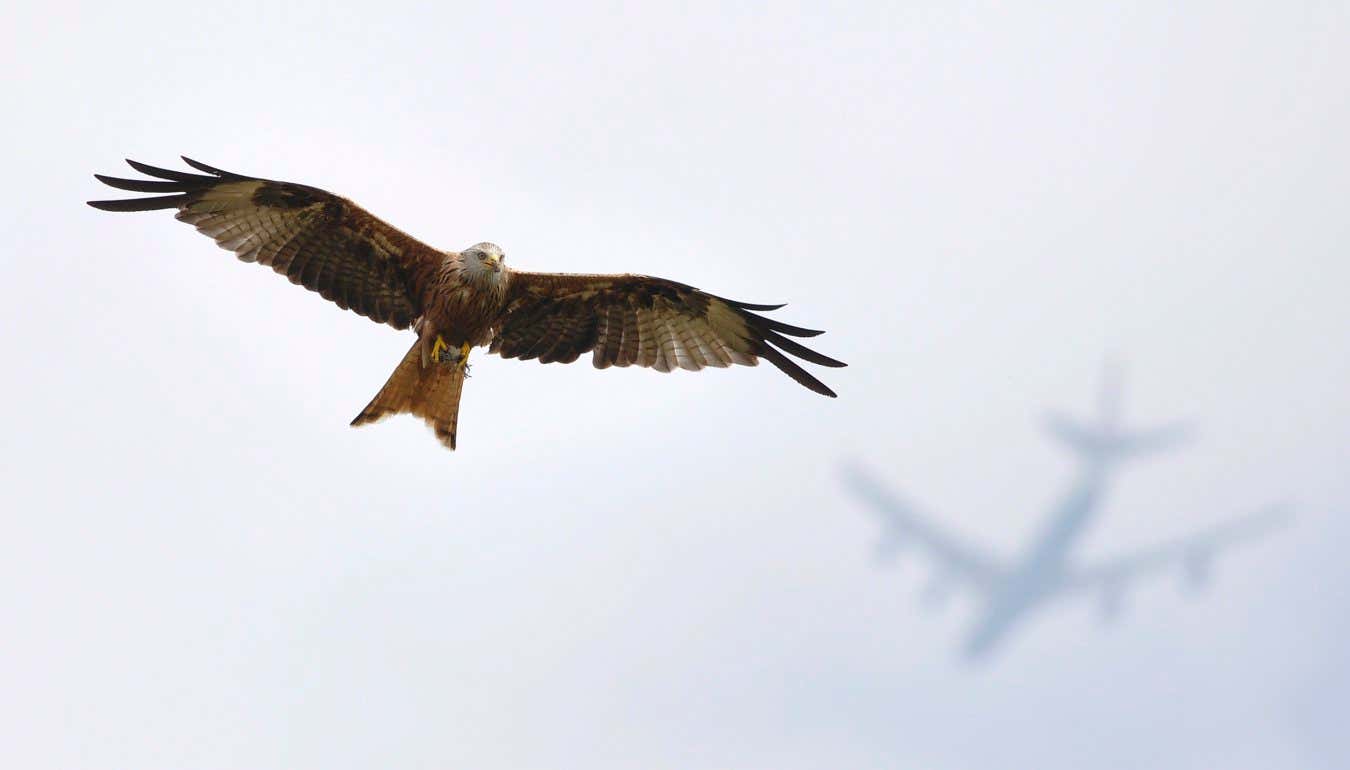
A red kite takes flight in the UK
Owen Hearn
Flight Paths by Owen Hearn juxtaposes a close view of a red kite with the distant outline of a plane. It was taken at a site in Bedfordshire in the UK once earmarked for London’s third major airport. While the red kite’s recovery is a success story, the UK is one of the world’s most nature-depleted countries, says McCartney.
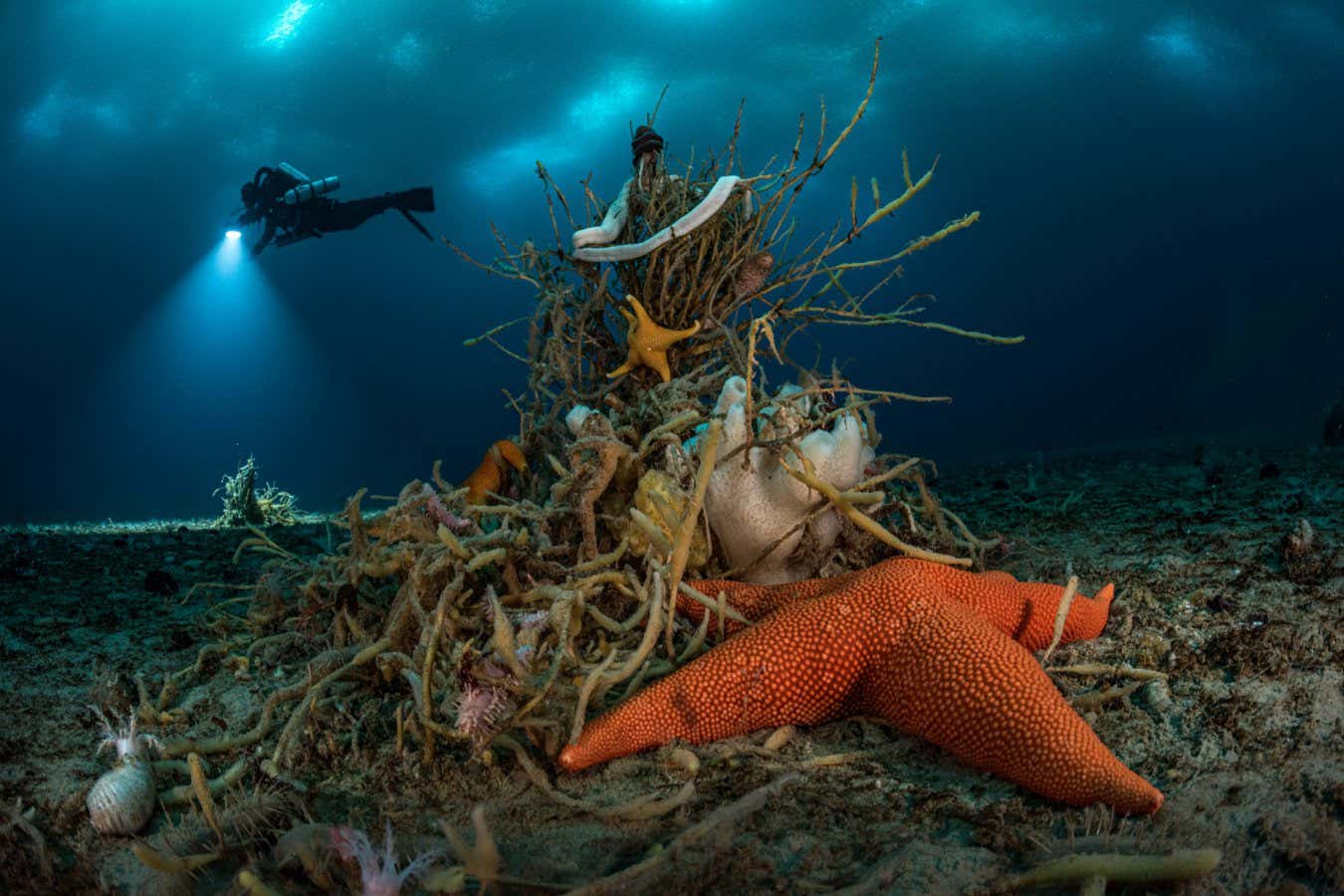
Life beneath the ice off the coast of Antarctica
Laurent Ballesta
Laurent Ballesta’s Pyramid of Life shows the range of organisms below East Antarctica’s sea ice, including giant ribbon worms and sea stars.
Wildlife Photographer of the Year is now in its 61st year, with judges choosing the best of 60,000 entries, up from 341 in 1965. The winners will be announced on 14 October.
Topics:
Source link : https://www.newscientist.com/article/2498939-stunning-images-highlight-fight-to-save-earths-rich-biodiversity/?utm_campaign=RSS%7CNSNS&utm_source=NSNS&utm_medium=RSS&utm_content=home
Author :
Publish date : 2025-10-08 18:00:00
Copyright for syndicated content belongs to the linked Source.

